 Mysteries
Mysteries  Mysteries
Mysteries  History
History 10 Surprising Stories About the Texas Rangers
 Humans
Humans 10 Philosophers Who Were Driven Mad by Their Own Theories
 Miscellaneous
Miscellaneous 10 Video-Game-Worthy Weapons and Armors from History
 Weird Stuff
Weird Stuff 10 Psychics Who Accurately Predicted Wartime Events
 The Arts
The Arts 10 Pieces of Art Inspired by a Broken Heart
 Health
Health 10 Science Fiction-Sounding New Medical Treatments
 History
History 10 Surprising Facts About the Father of Submarine Warfare
 Space
Space Ten Astonishing New Insights into Alien Worlds
 Weird Stuff
Weird Stuff 10 Bizarre Summer Solstice Rituals Still Practiced Today
 Mysteries
Mysteries Top 10 Haunting Facts About the Ghost Ship MV Alta
 History
History 10 Surprising Stories About the Texas Rangers
 Humans
Humans 10 Philosophers Who Were Driven Mad by Their Own Theories
Who's Behind Listverse?

Jamie Frater
Head Editor
Jamie founded Listverse due to an insatiable desire to share fascinating, obscure, and bizarre facts. He has been a guest speaker on numerous national radio and television stations and is a five time published author.
More About Us Miscellaneous
Miscellaneous 10 Video-Game-Worthy Weapons and Armors from History
 Weird Stuff
Weird Stuff 10 Psychics Who Accurately Predicted Wartime Events
 The Arts
The Arts 10 Pieces of Art Inspired by a Broken Heart
 Health
Health 10 Science Fiction-Sounding New Medical Treatments
 History
History 10 Surprising Facts About the Father of Submarine Warfare
 Space
Space Ten Astonishing New Insights into Alien Worlds
 Weird Stuff
Weird Stuff 10 Bizarre Summer Solstice Rituals Still Practiced Today
10 Fascinating Facts About Shaolin
The ancient Shaolin Monastery is iconic in the martial arts world. From Bruce Lee to Kung Fu Panda to the spread of Buddhist philosophy to the West—we have Shaolin to thank for all of them. However, even though Shaolin has become an integral part of our global culture, most of us know surprisingly little about it.
10It Was Started By An Indian
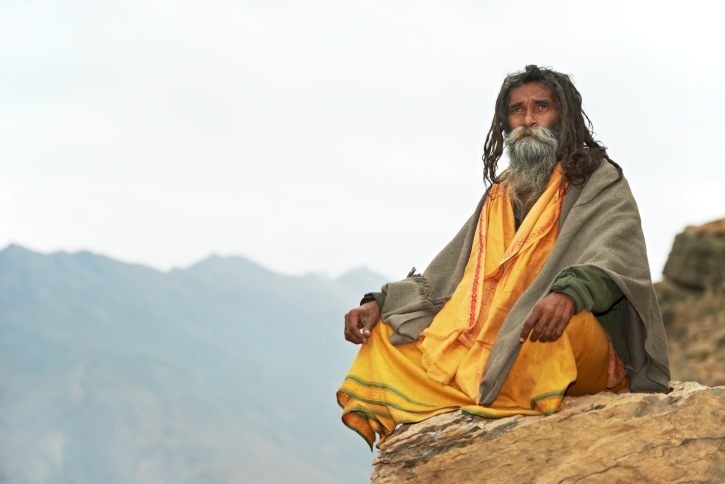
The Shaolin Monastery is such an integral part of Chinese culture that people are often surprised to learn that its founder wasn’t actually Chinese. Known as Batuo or Buddhabhadra, the founder of Shaolin was a wandering Buddhist monk from India who arrived in the Empire of Northern Wei around A.D. 464. He preached there for several decades before the Emperor Xiaowen ordered the building of the Shaolin Monastery on Mount Song, in what is now Henan Province, and made Batuo its first abbot. Sources from the period are rare, but the early monastery appears to have functioned as a center for translating Buddhist texts into Chinese.
Under Batuo’s leadership, the monks followed the Hinayana school of Buddhism. Since the Hinayana path was notoriously hard to follow even for monks, the monastery remained relatively small. It was only with the coming of Bodhidharma, another Indian monk, that Hinayana was discarded and replaced with Chan (Zen) Buddhism, which the Shaolin monks follow to this day.
9It Isn’t The Only Order Of Warrior Monks
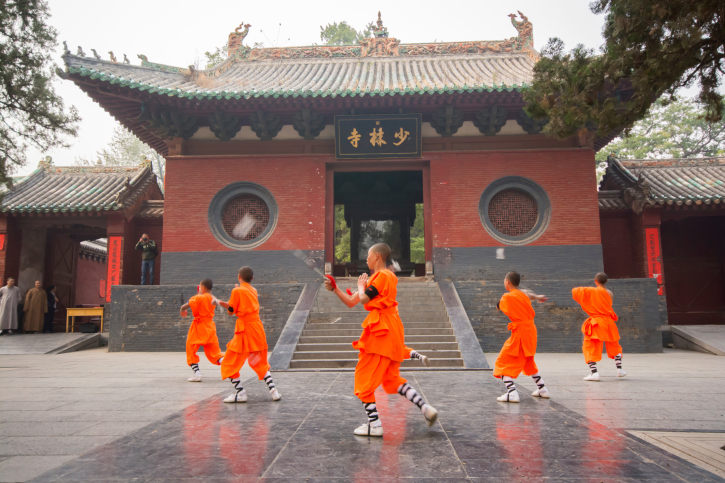
Contrary to popular belief, Shaolin doesn’t hold a monopoly over the warrior monk business. In fact, it wasn’t even the first monastery to have fighting monks. Centuries before Shaolin was founded, other Chinese Buddhist monasteries were already storing weapons and practicing martial arts. Shaolin itself was built to be a peaceful center of learning. According to legend, it was only with the arrival of Bodhidharma during the fifth or sixth century A.D. that the Shaolin monks began practicing their fighting skills—but the first actual records of Shaolin martial arts date to 14th century.
In fact, the world has no shortage of religious orders with a tradition of martial arts. In India, the Naga Sadhus were once the most heavily armed and warlike of all Hindu sects. Devotees of Shiva, the Sadhus are known to today’s tourists as loincloth-wearing Hindu holy men with matted hair, but during the Mughal period they were among the subcontinent’s most feared fighters, known for wielding fearsome sharpened iron pincers.
Korean Buddhist monks also practice martial arts, called Bool Kyo Mu Sool (Buddhist Temple Martial Arts), and were once called upon to fight for their country during national emergencies. In Japan, the Sohei, or “monk warriors,” once controlled large territories, fueled by a belief in salvation through holy war. Even in Tibet, there were fraternities of warrior monks under the command of the Dalai Lama.
8Kung Fu Did Not Come From Shaolin
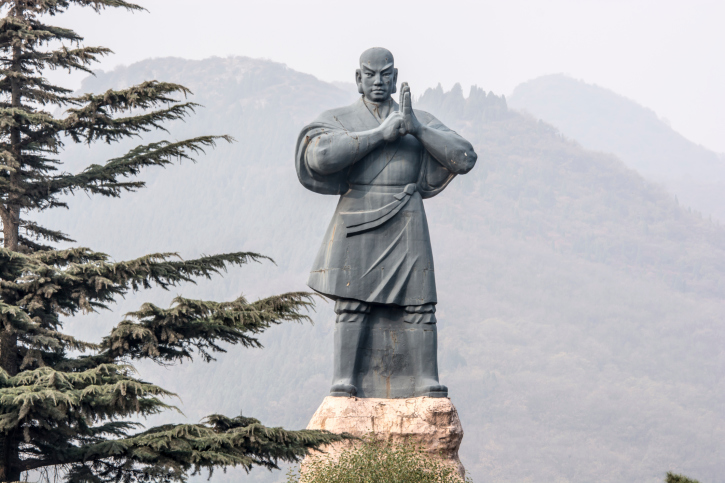
In China, it is said that “all martial arts under heaven arose out of Shaolin.” But this isn’t the historical truth. There was no institutionalized combat training for several centuries after Shaolin was founded. The monks did participate in the battles that helped create the Tang Dynasty (A.D. 618–907), but even then there is no evidence that they had developed a unique form of fighting. Historians believed that the monks during the Tang Dynasty simply used common Tang weaponry and were no more skilled in martial arts than any other soldiers. While the earliest records of Shaolin martial arts date from the 14th century, the monks probably started specializing in fighting with a long staff (their signature weapon) during the 12th century. Shaolin expertise in hand-to-hand combat can only be dated to the 16th century.
Meanwhile, kung fu’s history can be traced back to long before the Shaolin monastery was even founded. The Spring and Autumn Annals, which were probably composed between 800–500 B.C., reference “hard” and “soft” martial arts techniques, a division that remains a core kung fu philosophy today. By the time of the Ming Dynasty (A.D. 1368–1644), when Shaolin first became associated with martial arts excellence, kung fu was already common throughout China.
7It Helped Found An Imperial Dynasty
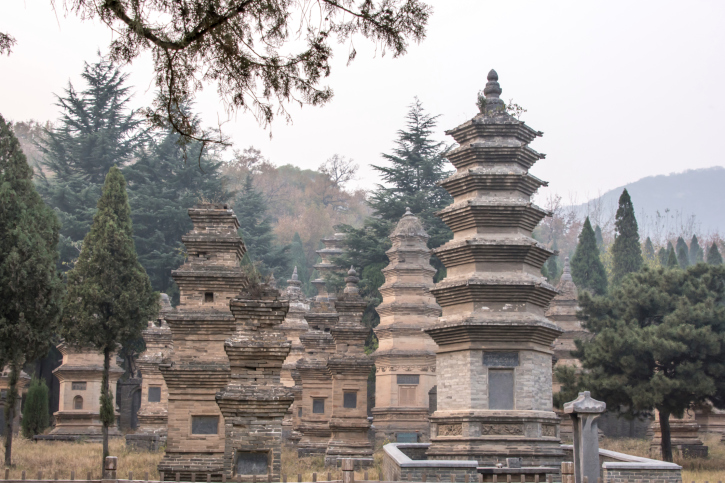
Shaolin’s preeminence among Chinese monasteries began to take root during the end of the Sui dynasty (581–618 A.D.). The Sui had united China, but were quickly toppled by a series of popular revolts and the subsequent assassination of the emperor. In the aftermath of their fall, several noble houses began to vie for control of the crumbling empire. One claimant to the throne was Wang Shichong, a former Sui general, who quickly occupied the territory of Zheng. To strengthen his hold over the ancient capital of Luoyang, Wang Shichong built a signal tower and military encampment at Mount Huanyuan, on a piece of land that had been granted to Shaolin by Emperor Wen of Sui. Fearing that the monks would rebel against him as a result, he sent an army to lay siege to Shaolin itself. To counter Wang Shichong, the monks pledged allegiance to his rival Li Yuan, who would eventually become the founder of the Tang dynasty.
Li Yuan sent his son, Prince Li Shimin, to aid the monks and attack Luoyang. With the monks’ assistance, Li Shimin was able to remove Wang Shichong’s army from Mount Huanyuan, leaving Luoyang defenseless and forcing Wang to surrender. With Wang defeated, the Tang were able to consolidate their hold over China, which they would rule until A.D. 907. Shaolin’s role in winning the war ensured they would be held in high esteem by the dynasty.
6The Grisly Mythical Origin Of Tea

China’s most beloved beverage has many myths and legends surrounding its creation. One of the myths dates back to the Tang dynasty—a gruesome tale involving extreme religious devotion and severed body parts.
The legend claims that centuries after the founding of the Shaolin Temple, a devout monk named Bodhidharma took the long and dangerous road from his native India to China, in the hope of spreading Buddhist teachings there. After traveling all over China, he finally came upon the Shaolin Temple and decided to stay in a nearby cave. There, he demonstrated his intense devotion by meditating for nine years with his back on the cold stone wall, with no food or water and with his eyes wide open.
Many years later, Bodhidharma decided to repeat the feat, but this time he found himself dozing off in the middle of his meditation. Angered by his lack of discipline, he cut off his own eyelids so that he would never succumb to the sweet temptation of sleep. To his amazement, a plant sprang forth from the ground where the eyelids fell. The plant’s leaves had the ability to help him stay awake, and thus the tea bush came into the world. This is said to be the reason why dried tea leaves look like withered eyelids.
5The Shaolin Werewolf
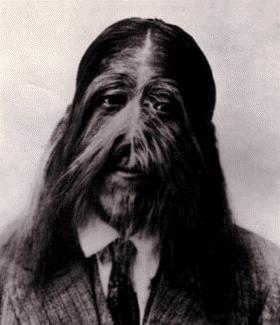
According to legend, during the latter half of the 19th century there lived a man named Tai Djin, who was dubbed the langren (“werewolf”) of Shaolin. Djin, who suffered from hypertrichosis, was renowned for his hair-covered body—and for being the greatest martial artist in China.
The werewolf of Shaolin was born to a superstitious provincial family, who mistook him for a demon. Thinking that his presence would cause their family great misfortune, they quickly wrapped the boy in swaddling clothes and left him to die in a nearby forest. Fortunately, some passing Shaolin monks heard his cries and took pity on the abandoned child, taking him back to the Fukien Shaolin Temple. The monks tried to find a family for Tai Djin, but no one was willing to take in the hairy child. Eventually, the monks decided to raise him themselves.
Growing up at the temple, Tai Djin learned martial arts from the Shaolin masters. Unlike most martial artists, who dedicate their entire lives to learning one or two styles of kung fu, Tai Djin decided to master all of them. One story claims that he eventually mastered more than 200 “empty hand” fighting techniques and was proficient with more than 100 weapons. He was even said to have learned the infamous dim mak, or “death touch.”
Tai Djin was also said to have possessed superhuman senses. A famous anecdote about him tells of an occasion when he entered a meeting with 12 Shaolin masters. Instead of greeting them immediately, as was tradition, he pulled out a knife and threw it straight at the roof. To the shock of the masters an assassin fell to the floor with the knife embedded in his chest. When asked how he knew the assassin was there, Tai Djin said that when he entered the room he had seen 12 people, but heard 13 people breathing.
Unfortunately, it’s not completely clear if Tai Djin was really involved with Shaolin, or if he was even a real person. Either way, his legend continues to inspire martial artists to this day.
4The Shaolin God

One deva (godlike being) the Shaolin monks particularly adore and venerate as their patron “saint” is the Bodhisattva Vajrapani. Just like the Christian saints, Vajrapani has his fair share of weird legends. One of the strangest tells of how Vajrapani saved a young monk from bullies.
Long ago, shortly after the founding of Shaolin, there lived a monk named Sengchou who was constantly being bullied by his fellow monks. Unable to take the abuse any longer, Sengchou sought divine aid to end his torment. He went to a temple where a statue of Vajrapani stood and prayed for six days and six nights with no water to soothe his thirst or food to quell his hunger. Finally, on the sixth night, the deva appeared before him.
In a booming voice Vajrapani asked the monk if he was determined to be stronger. When Sengchou eagerly nodded his head, Vajrapani conjured a huge bowl of steaming meat and told him to eat it. Sengchou was horrified, for monks are supposed to renounce all meat. Annoyed by the monk’s reaction, Vajrapani took out his knife and used it to pry open Sengchou’s mouth, forcing the meat down his throat. Sengchou tried to puke out the meat, causing Vajrapani to threaten him with a beating unless he started cooperating. Terrified of being assaulted by a god, Sengchou finally gulped down the meat as fast as he could.
Upon returning to his dormitory, Sengchou was immediately accosted by his bullies. To everyone’s surprise, he suddenly displayed extraordinary physical strength and combat skills, easily defeating his assailants. Sengchou’s new skills were said to be so great that he could run up walls, jump several stories high, and easily lift huge objects. Needless to say, the bullying did not continue. All thanks to Vajrapani and his big bowl of meat.
3Shaolin vs. Japanese Pirates

As their combat skills developed, Shaolin monks were often drafted to fight for China. One of the greatest threats to the country’s stability came from the seas—from the ferocious Wokou, the “dwarf pirates” of Japan. During the early 16th century, China’s coastal towns were constantly ravaged by these Japanese buccaneers. Trade was severely hampered and people fled the coast in droves. The last straw came in 1553, when the Wokou attacked the port city of Hangzhou. With hundreds dead, thousands left homeless, buildings destroyed, and a huge fortune looted, the Ming court had finally had enough. By royal order, 120 elite warrior monks were conscripted and tasked with ending the pirate menace.
With Tianzheng and Tianchi from Shaolin as their generals, the monks sought out the Wokou to destroy them. But the pirates were not as easily defeated as the monks were hoping. Of the four major battles between them, three ended in stalemate for the monks. Only during the Battle of Wengjiagang were the monks totally victorious over their foes, completely obliterating their enemies in a grueling fight. The monks showed a particularly vicious streak during the campaign, killing every pirate they came across. One monk even used an iron staff to kill the wife of a pirate who tried to flee the carnage.
2The Jieba
Fans of kung fu films featuring Shaolin monks might have noticed that they are often depicted with nine circular dots (three rows of three dots) on their forehead. This is known as the Jieba, a sacred mark placed on a monk by his master or Abbot as a sign that he has completed his training. The Jieba holds great significance within Shaolin—each dot signifies one of the fundamental rules of conduct that every monk must follow. Sadly, the Jieba was banned until recently.
Receiving the Jieba involves a lengthy ceremony, which involves a month of intense meditation and physical conditioning. At the climax of the ceremony, nine sticks of incense are affixed on the top of the head with a paste. The incense sticks are then allowed to burn until the skin of the scalp is singed completely black.
In 2007, the Chinese government finally announced a partial lifting of the ban, allowing the monks to revive the ancient tradition. Only 100 monks were deemed to be physically and mentally prepared to receive the Jieba, and only 43 actually went through with the branding ceremony. To date, there is only one Westerner known to have received the Jieba—Franco Testini, also known as Shi Yan Fan, an Italian-born monk who now runs an affiliated temple in California.
1Star Wars And Shaolin
According to George Lucas himself, the Shaolin monks were one of the key inspirations for the Jedi Knights, and the Star Wars films clearly owe a large debt to the real Shaolin monks. The concept of an all-encompassing “Force” within each living thing is comparable to the concept of “Chi.” Legendary Shaolin monks attributed their superhuman physical prowess to the control and manipulation of Chi, much like the Jedi and the Force. The Jedi’s lightsaber fighting style strongly resembles the acrobatic techniques used by the monks when wielding their famous staffs or double-edged swords. Even the Jedi’s belief in semi-pacifism (only using force when absolutely necessary), abstinence from earthly pleasures, and emotional detachment mirror Buddhist beliefs.
There are also strong similarities between the Jedi Order’s backstory and the Shaolin Temple’s history. The power struggle between the Jedi Order and Emperor Palpatine resembles Shaolin’s conflict with the Qing Dynasty emperors. In Revenge of the Sith, Palpatine orders Anakin Skywalker to attack the Jedi Temple and slaughter the younglings training there. Shaolin experienced a similar fate when the Qing emperor ordered the destruction of the temple and the massacre of its inhabitants, including the children.
Petros has nothing much to say about himself. Let us leave it at that.
By the way, if you have nothing better to do, you can visit his site.








